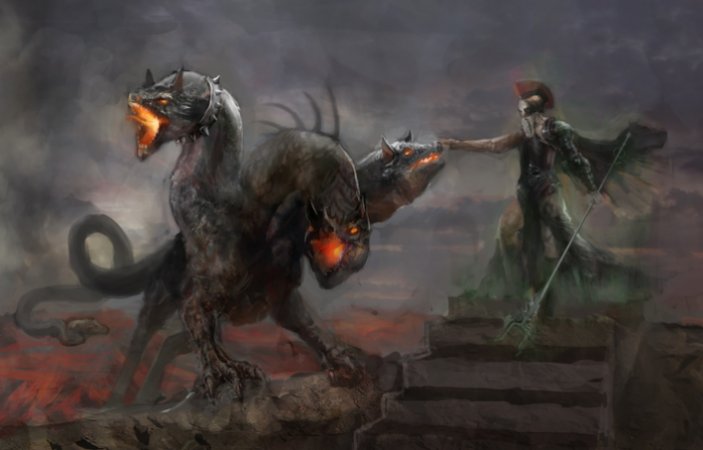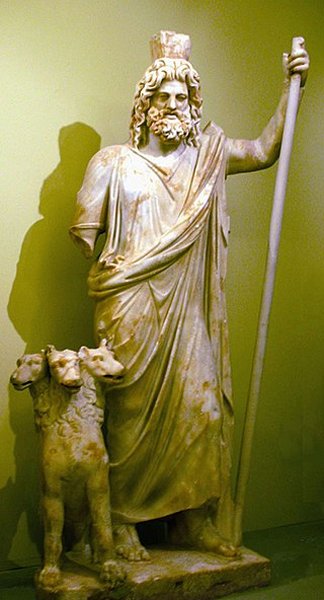Cerberus – Giant Multi-Headed Dog Guards The Underworld Of God Hades In Greek Mythology
Ellen Lloyd - AncientPages.com - Cerberus is a famous monster in Greek mythology. Often described as a giant three-headed dog, Cerberus guards the gates of the Greek underworld, ensuring that no one escapes from the realm of Hades, the god of the dead and the king of the underworld.
Cerberus guarded the underworld, the realm of God Hades. Credit: Stock photo
Stories of Cerberus are mentioned in both Greek and Roman mythology. The depiction of this multi-headed creature depends on the ancient source material. In most cases, Cerberus is described as having three heads, a serpent for a tail, and snakes protruding from parts of his body. Each of the heads is uglier than the other. In some myths, the three heads represent the past, present, and future.
Multi-headed animals are often encountered in ancient myths and legends. In Hindu mythology, for example, we learn about the legendary Uchchaihshravas, a divine, seven-headed flying horse of God Indra. However, in other ancient accounts, such as Hesiod's Theogony, Cerberus has as many as 50 heads, and Pindar (c. 522 – c. 443 BC), an ancient Greek poet from Thebes, gave the monster as many as 100 heads.
Cerberus Predates Ancient Greek Gods And Goddesses
There are many myths about Cerberus, and this guardian dog is mentioned in the Orpheus legend and the 12th labor of Hercules.
As a primordial being predating the Greek gods and goddesses, Cerberus is a unique creature in Greek mythology. According to some Greek myths, Cerberus is associated with Hydra. Cerberus was said to be the offspring of Echidna and the snake-bodied Typhon.
Cerberus and Hades/Serapis. Heraklion Archaeological Museum, Crete, Greece. Credit: Wikipedia, CC BY 3.0
According to Theogony 313, the Hydra is the child of Typhon and Echidna. The characteristic of the Hydra was that if someone cut off one of its heads, it would grow back. The Hydra also had extraordinary teeth that could raise skeletons from the dead.
Cerberus As Guard Dog Of The Underworld
Though described as a monster, Cerberus was undoubtedly dangerous and attacked everyone except spirits, but he was a watchdog and only performed his duty.
"Cerberus' saliva was exceedingly toxic; wherever it fell upon the ground, it would cause aconite to spring. Newcomers were advised to carry baklava (honey cakes) with them as they entered the underworld, as Cerberus would spitefully bite the shades as they entered," Theresa Bane wrote in her book Encyclopedia of Beasts and Monsters in Myth, Legend, and Folklore.
It was almost impossible to pass through the gates to the underworld because Cerberus savagely consumed anyone trying to do so. His job was to prevent everyone from returning to the land of the living. As described earlier in Ancient Pages, Orpheus defeated death, descended into the underground kingdom, and left it alive. Determined to bring back his beloved bride, Eurydice, who had stepped on a poisonous snake whose venom killed her, Orpheus courageously entered the realm of Hades, carrying only his lyre. When Orpheus encountered Cerberus, he started to play on his lyre, and the dog fell asleep.
Cerberus closed his six eyes and dreamt of another life when he had been a real dog. He recalled days before being captured and trained to work as a guardian for the dead in his dreams. While Cerberus was sleeping, Orpheus passed over him and descended to the underworld.
Cerberus, with the gluttons in Dante's Third Circle of Hell. Credit: William Blake, Wikipedia
Cerberus lay down, closed his six eyes, lolled his three tongues, and went to sleep to dream of the days he had been a real dog before being captured and changed and trained as a sentinel for the dead. Orpheus stepped over him and went through the gates.
In Virgil's Aeneid, the hero Aeneas did something similar. He put Cerberus to sleep by giving him drugged cookies. Heracles also managed to pass Hellhound, but only by using force.
Cerberus In Art And Literature
The memory of this Hellhound has been long-lived—the earliest depiction of the Greek monster dog dates from the sixth century BC. On a Corinthian cup (c. 590–580 BC) from Argos, Cerberus is depicted with just one head and snakes rising from his head and body. The Hellhound is sometimes seen in Roman art with a large central lion head and two smaller dog heads on either side.
Cerberus is presented as a vicious creature that rips, rends, and flays the souls around him with his teeth and claws. In Dante's Inferno, Cerberus is mentioned in the Third Circle of Hell. There, he is the guardian and keeper of the Circle of Gluttony.
Sir Arthur Conan Doyle's famous Hound of the Baskervilles and Stephen King's rabid St. Bernard, Cujo, also remind us of the legendary ancient Greek hellhound Cerberus that the future generations have never forgotten.
Updated on February 6, 2024
Written by Ellen Lloyd – AncientPages.com
Copyright © AncientPages.com All rights reserved. This material may not be published, broadcast, rewritten or redistributed in whole or part without the express written permission of AncientPages.com
Expand for referencesMore From Ancient Pages
-
 Hadrian’s Wall: North-West Frontier Of The Roman Empire For Nearly 300 Years
Featured Stories | Sep 1, 2020
Hadrian’s Wall: North-West Frontier Of The Roman Empire For Nearly 300 Years
Featured Stories | Sep 1, 2020 -
 Untold Story Of The Glencoe Massacre In 1692 Revealed By Archaeologists In Scotland
Archaeology | Dec 18, 2024
Untold Story Of The Glencoe Massacre In 1692 Revealed By Archaeologists In Scotland
Archaeology | Dec 18, 2024 -
 Were Medieval Philosophers Familiar With The Multiverse Theory?
Featured Stories | Oct 4, 2018
Were Medieval Philosophers Familiar With The Multiverse Theory?
Featured Stories | Oct 4, 2018 -
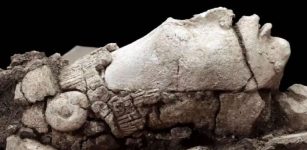 1,300-Year-Old Mayan Maize God Sculpture Found in Palenque, Mexico
Archaeology | Jun 2, 2022
1,300-Year-Old Mayan Maize God Sculpture Found in Palenque, Mexico
Archaeology | Jun 2, 2022 -
 Middle Iron Age And Roman Period Buildings And Relics Discovered In Bedfordshire, UK
Archaeology | Feb 27, 2022
Middle Iron Age And Roman Period Buildings And Relics Discovered In Bedfordshire, UK
Archaeology | Feb 27, 2022 -
 8200-Year-Old ‘Viste Individual’ – DNA Analysis May Shed Light On Early Migration To Norway
Archaeology | Dec 6, 2015
8200-Year-Old ‘Viste Individual’ – DNA Analysis May Shed Light On Early Migration To Norway
Archaeology | Dec 6, 2015 -
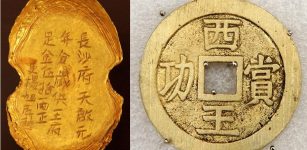 Ancient Legend Is Now Proven True: Sunken Treasure Of Gold And Silver Found
Archaeology | Mar 22, 2017
Ancient Legend Is Now Proven True: Sunken Treasure Of Gold And Silver Found
Archaeology | Mar 22, 2017 -
 Surtshellir Cave Reveals How Vikings Attempted To Prevent Ragnarök – Doom Of The Gods
Vikings | Jul 17, 2023
Surtshellir Cave Reveals How Vikings Attempted To Prevent Ragnarök – Doom Of The Gods
Vikings | Jul 17, 2023 -
 12,000-Year-Old Artifacts In Louisiana Saved By Scientists
Archaeology | Jul 18, 2023
12,000-Year-Old Artifacts In Louisiana Saved By Scientists
Archaeology | Jul 18, 2023 -
 L’Anse Aux Meadows – Viking Site Confirms Norse Vinland Sagas Were Based On Real Events
Featured Stories | Jun 10, 2021
L’Anse Aux Meadows – Viking Site Confirms Norse Vinland Sagas Were Based On Real Events
Featured Stories | Jun 10, 2021 -
 Secrets Of The Gods – Why The Papyrus Of Manetho And His Pre-Dynastic King List Upset Egyptologists
Ancient Mysteries | May 16, 2017
Secrets Of The Gods – Why The Papyrus Of Manetho And His Pre-Dynastic King List Upset Egyptologists
Ancient Mysteries | May 16, 2017 -
 Ancient Europeans Ate Seaweed And Freshwater Plants – Evidence Found
Archaeology | Oct 17, 2023
Ancient Europeans Ate Seaweed And Freshwater Plants – Evidence Found
Archaeology | Oct 17, 2023 -
 Mysterious 3,200-Year-Old Hittite Map Of The Cosmos And The 12 Gods
Archaeoastronomy | Jul 2, 2021
Mysterious 3,200-Year-Old Hittite Map Of The Cosmos And The 12 Gods
Archaeoastronomy | Jul 2, 2021 -
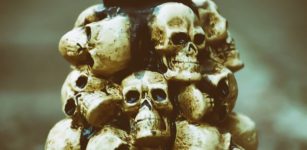 Day Of The Dead: From Aztec Goddess Worship To Modern Mexican Celebration
Ancient Traditions And Customs | Oct 30, 2019
Day Of The Dead: From Aztec Goddess Worship To Modern Mexican Celebration
Ancient Traditions And Customs | Oct 30, 2019 -
 Mysterious Ancient Human Skeletons Found In Florida Lake Puzzle Archaeologists – Unknown Lost Settlement?
Featured Stories | May 21, 2024
Mysterious Ancient Human Skeletons Found In Florida Lake Puzzle Archaeologists – Unknown Lost Settlement?
Featured Stories | May 21, 2024 -
 Graeae: Three Sisters Of Fate Who Shared One Eye And Tooth In Greek Mythology
Featured Stories | Jun 8, 2016
Graeae: Three Sisters Of Fate Who Shared One Eye And Tooth In Greek Mythology
Featured Stories | Jun 8, 2016 -
 Exploring Future Evolution: How Will Humans Change In The Next 10,000 Years?
Featured Stories | Oct 3, 2022
Exploring Future Evolution: How Will Humans Change In The Next 10,000 Years?
Featured Stories | Oct 3, 2022 -
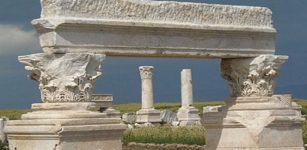 Christian Church And Large House Unearthed In Ancient Laodicea, A Major Hub Of Christianity
Archaeology | Oct 31, 2020
Christian Church And Large House Unearthed In Ancient Laodicea, A Major Hub Of Christianity
Archaeology | Oct 31, 2020 -
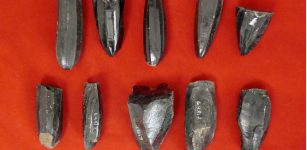 Mayas Utilized Market-Based Economics – New Study
Archaeology | Jan 6, 2023
Mayas Utilized Market-Based Economics – New Study
Archaeology | Jan 6, 2023 -
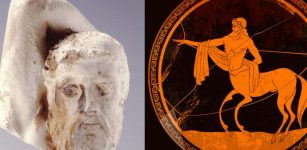 Why Is This Centaur Head A Scientific Mystery?
Archaeology | Jan 19, 2024
Why Is This Centaur Head A Scientific Mystery?
Archaeology | Jan 19, 2024

